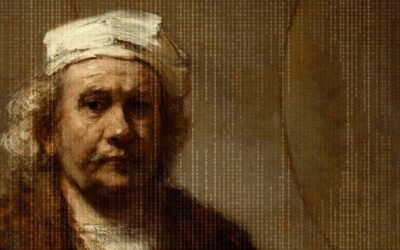Ask Me Anything (AMA): How to Migrate Data into a New Museum CMS

Rachael Cristine Woody
Following up on the “Ask Me Anything: How to Prepare for a New CMS” webinar, this post answers questions we received regarding the testing and refining that ensure smooth data migration.
Our thanks to everyone who sent in questions! Your participation helps us craft future content that is of the most use to you, our colleagues.
Today’s post focuses on how to successfully migrate into a new museum Collections Management System (CMS). Specifically, testing and refining in order to ensure a smooth data migration.
Q.What should we prepare ahead of time to ensure successful migration into a new system?
This question helps us to focus on the “nuts and bolts” of data migration into the new museum CMS. The first part to consider is “Where is the data going?”.
Part 1: Consider Where the Data is Going
The very first step is to determine where the collection data will go in the new CMS. This means the identification of fields and functions, required fields, standards to follow, and a mapping of your data from the location in the old CMS to the new.
During part 1, identify the following:
- Document fields and functions
- Identify what fields are required
- Establish standards
- Create a data map
Once we know where the data should go, the next part is testing and refining our process of actually migrating the data into the new system.
Part 2: Test and Refine
Testing is perhaps the most critical piece to have in place in order for a successful data migration. Testing can be as small or as large as you’d like it to be, and as long or as short as you need it to be. The important part is that there’s at least some testing for the majority of your data in order to have the opportunity to make corrections and refine your approach for the official migration.
- Perform a small test migration
- Identify areas of the data that may not migrate correctly
- Make a plan to cleanup non-standard data
- Perform a larger trial migration
Whether you’re working with a CMS vendor or not, a data map will be incredibly valuable as you move forward in the final stages of implementing your new CMS.
Q. Is there any information you recommend NOT migrating to the new system?
There is, of course, data in our systems that could be considered “junk” data. Perhaps it’s outdated, inaccurate, or insensitive. Or, perhaps, it no longer serves a valuable management or access purpose. There are a few pieces of data you may wish to leave behind—meaning you don’t have to migrate it to the new system. For example:
- Data that no longer holds meaning, is out of date, or incorrect
- Extensive audit logs
- Records created for items not in the collection
- Old vocabularies
- Donor, volunteer, membership, or other information
The disposal of data relics is merely a suggestion. If you’re unsure, you can always migrate the data for future assessment. Depending on the data type and information it may be worth marking it as an internal note and sending it to a designated field that can be reviewed and actioned or cleared out—depending on the verdict.
Conclusion
As the conductor of data from one system to another, the ability to view concurrent phases at both a broad and detailed level are important for the job. While it’s a large task, it’s also very doable—especially if you have the opportunity to test and refine your data migration process. This is also an area where self-learning is an avenue to pursue thanks to the sheer amount of “how to” resources that are available. The important first step is to dive in.
Additional Reading
This is part of an Ask Me Anything series, a capstone to months’ worth of posts and webinars. For more details on the content we’ve covered, you may find the following Think Clearly posts of interest:
Create a Plan for Museum Data Cleanup
Document Museum CMS Fields and Function
Craft Museum Workflows That Include the CMS
How to Chart a Course Toward a Better Museum CMS
How to Prepare for a New Museum CMS

Rachael Cristine Woody
Rachael Woody advises on museum strategies, digital museums, collections management, and grant writing for a wide variety of clients. She has authored several titles published by Lucidea Press, including Museum Digital Projects and You. Where to Begin? Rachael is a regular contributor to the Think Clearly blog and a popular presenter.
Never miss another post. Subscribe today!
Similar Posts
No-Code Digital Storytelling Example: Rembrandt’s Self-Portrait at Kenwood House
Explore how English Heritage’s Kenwood House uses the no-code platform Shorthand to bring Rembrandt’s Self-Portrait with Two Circles to life through visual storytelling and interactive design.
Exploring No-Code Digital Storytelling: Hoover’s “Fanning the Flames” Exhibit
Explore no-code digital storytelling with Hoover’s ‘Fanning the Flames’ exhibit. See how interactive tools (Deep Zoom Color Compare & Hot Spot) enhance user engagement and the visual experience.
An Introduction to Scrollytelling for Museums
Discover how museums use scrollytelling and digital storytelling platforms to create immersive narratives. This introduction explores key concepts and approaches to interactive storytelling.
Exploring Self-Determinate Multiple Pathways: An Example of Digital Storytelling
Discover how self-determinate multiple pathways offer flexible interactive storytelling in museum exhibits. Learn from the Tenement Museum’s ‘Your Story Our Story.’






Leave a Comment
Comments are reviewed and must adhere to our comments policy.
0 Comments